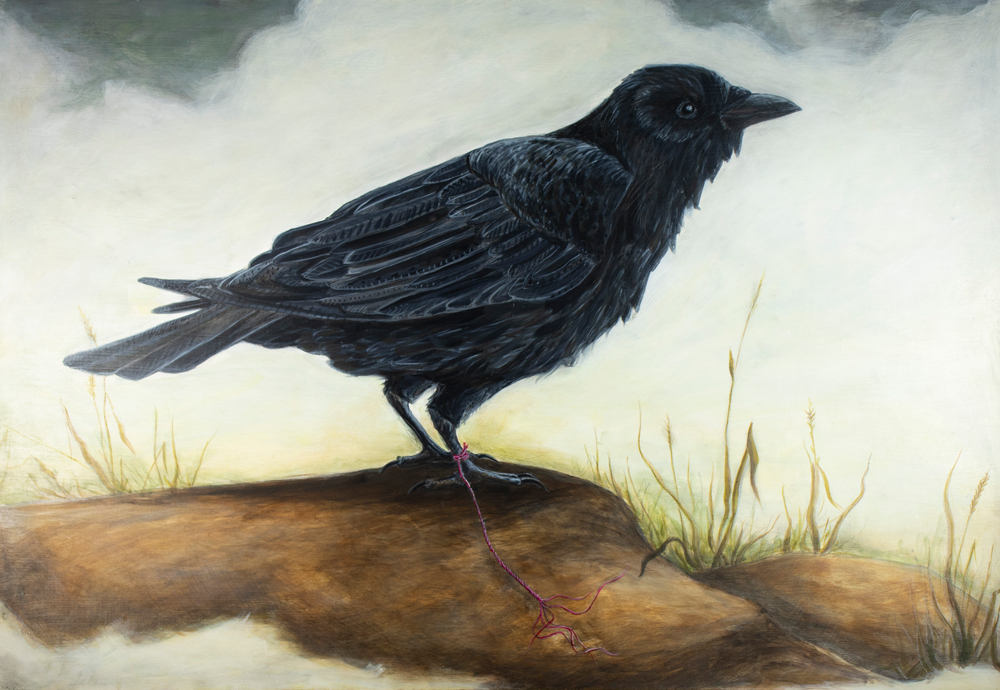Justin Thomas
Museum of Art
“January Thaw – Raven”
42″ x 29″ acrylic, graphite on wood panel
Justin Thomas is the buyer and retail manager at the Smith College Museum of Art. He is also an artist himself. He lives in Windsor (MA) where he shares a home studio with his partner, Terrence Trapp, a garden and landscape designer. Surrounding their home and studio, Justin and Terrence enjoy maintaining extensive perennial, vegetable and woodland gardens. They also spend ample time hiking in the woods of Western Massachusetts and attending museums and art exhibitions (other than SCMA of course!).
Justin has been making artwork of one type or another since his early teens. He was very lucky to have a solid and extensive fine arts and art history education in high school and realized, right away, that he had found a format through which he could communicate. After high school, Justin went on to earn his BFA in painting and ceramic studies from the University of Massachusetts at Amherst, where he graduated in 1996.
Although most of his works are done on paper, Justin began using acrylic and graphite on hardwood panel about ten years ago when he realized, after years of working on canvas, that he simply liked working on a hard/rigid surface. He likes that there is no physical “give” to the panel surface.
Justin starts each painting by first doing a very detailed drawing directly on the surface. After he reaches a point where he is happy with it, in terms of the composition, details, etc, he begins to add thin washes and glazes of color. Then, he draws more; then paints more; and so on, building up the image until he knows that it is complete.
The painting Justin has submitted to the Staff Creative Arts Showcase, along with the majority of his creative work, focuses on an ongoing exploration of themes regarding shelter, personal history and the natural world. This particular painting was inspired by the many Ravens that live in the forest around his home. They have always lived there, ever since he can recall, and he finds them fascinating. The painting is a visual reference of “being on the very edge of change or transition,” which, he supposes, we all currently are.

